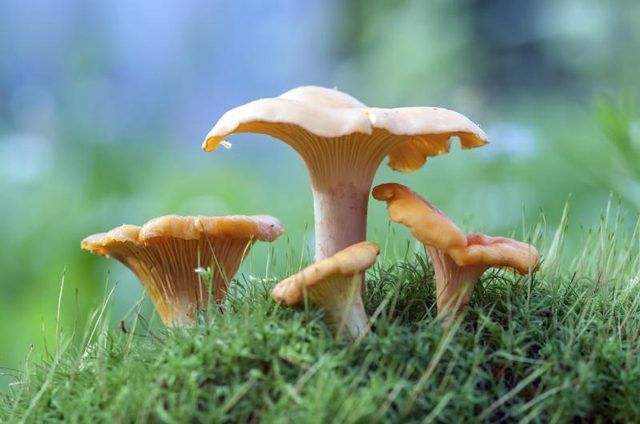Bulbs
Flower Basics
Flower Beds & Specialty Gardens
Flower Garden
Garden Furniture
Garden Gnomes
Garden Seeds
Garden Sheds
Garden Statues
Garden Tools & Supplies
Gardening Basics
Green & Organic
Groundcovers & Vines
Growing Annuals
Growing Basil
Growing Beans
Growing Berries
Growing Blueberries
Growing Cactus
Growing Corn
Growing Cotton
Growing Edibles
Growing Flowers
Growing Garlic
Growing Grapes
Growing Grass
Growing Herbs
Growing Jasmine
Growing Mint
Growing Mushrooms
Orchids
Growing Peanuts
Growing Perennials
Growing Plants
Growing Rosemary
Growing Roses
Growing Strawberries
Growing Sunflowers
Growing Thyme
Growing Tomatoes
Growing Tulips
Growing Vegetables
Herb Basics
Herb Garden
Indoor Growing
Landscaping Basics
Landscaping Patios
Landscaping Plants
Landscaping Shrubs
Landscaping Trees
Landscaping Walks & Pathways
Lawn Basics
Lawn Maintenance
Lawn Mowers
Lawn Ornaments
Lawn Planting
Lawn Tools
Outdoor Growing
Overall Landscape Planning
Pests, Weeds & Problems
Plant Basics
Rock Garden
Rose Garden
Shrubs
Soil
Specialty Gardens
Trees
Vegetable Garden
Yard Maintenance
How Mycorrhizae Fungi Affect Trees
How Mycorrhizae Fungi Affect Trees. An unlikely relationship exists between some fungal species -- called mycorrhizae -- and the trees in your backyard. Although the fungi attach themselves to the tree roots, they are not parasitic. They work together so that each benefits from the relationship.

An unlikely relationship exists between some fungal species -- called mycorrhizae -- and the trees in your backyard. Although the fungi attach themselves to the tree roots, they are not parasitic. They work together so that each benefits from the relationship.
A Love Affair
The two primary types of mycorrhizae colonize tree roots, but they target different parts of the roots. Endomycorrhizae, also called arbuscular mycorrhizae -- abbreviated AM -- grow inside the tree roots. Ectomycorrhizae – abbreviated EM -- grow around the outside of tree roots. As the fungi grow, they send out thin strands called hyphae into the soil. Because the mycorrhizae are attached to tree roots, their hyphae act like extensions of the roots. This increases the absorptive capacity of a tree’s root system to take up water and minerals. The payoff for the mycorrhizal fungi is an exchange of sugars -- the products of photosynthesis that a tree manufactures -- which mycorrhizae must have to live.
AM Host Trees
Trees that typically host AM fungi include sweet gum (Liquidambar styraciflua) and catalpa (Catalpa bignonioides), both of which are perennials in U.S. Department of Agriculture plant hardiness zones 5 through 9. Redbud (Cercis canadensis), hardy in USDA zones 4 through 8, and persimmon (Diospyros virginiana), hardy in USDA zones 4 through 9, are other AM hosts. New seedling sweet gum trees typically experience low growth rates in the first three to five years after planting. The seedlings are significantly healthier, however, when grown in AM-rich soil during this same establishment period.
EM Host Trees
A tipoff that EM fungi are hard at work is the presence of mushrooms, which are fungal fruiting bodies, around trees. Host trees for EM fungi include the common beech (Fagus sylvatica) and Douglas fir (Pseudotsuga menziesii), both hardy in USDA zones 4 through 7. These host trees may have more than one type of EM fungi attached to their roots that produce plant growth regulatory hormones, called auxins, to enhance root growth. Pinus species plants, including whitebark pine (Pinus albacaulis) in USDA zones 6 through 8, depend on mycorrhizal fungi for their survival.
The Benefits
Most plants that share beneficial relationships with mycorrhizal fungi experience increased growth, higher survival rates, increased disease resistance and enhanced nutrition compared to non-mycorrhizal plants, according to The Ohio State University Extension. Purdue University Cooperative Extension Service notes that mycorrhizal fungi can boost the growth of some tree seedlings by 400 percent. Mycorrhizae also enable seedlings to better withstand drought and poor soil and to grow as large as non-mycorrhizal plants with half the nutrients.